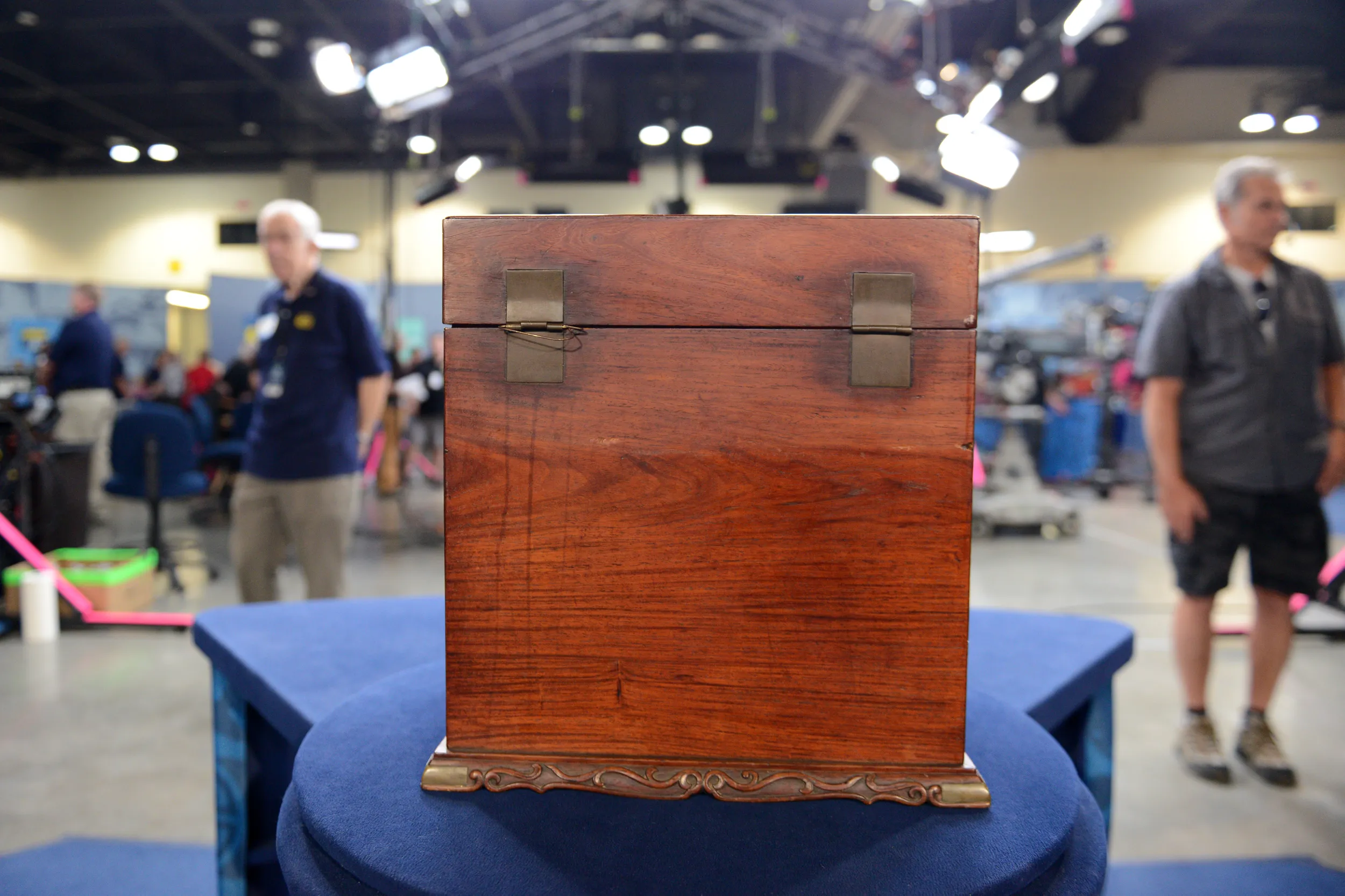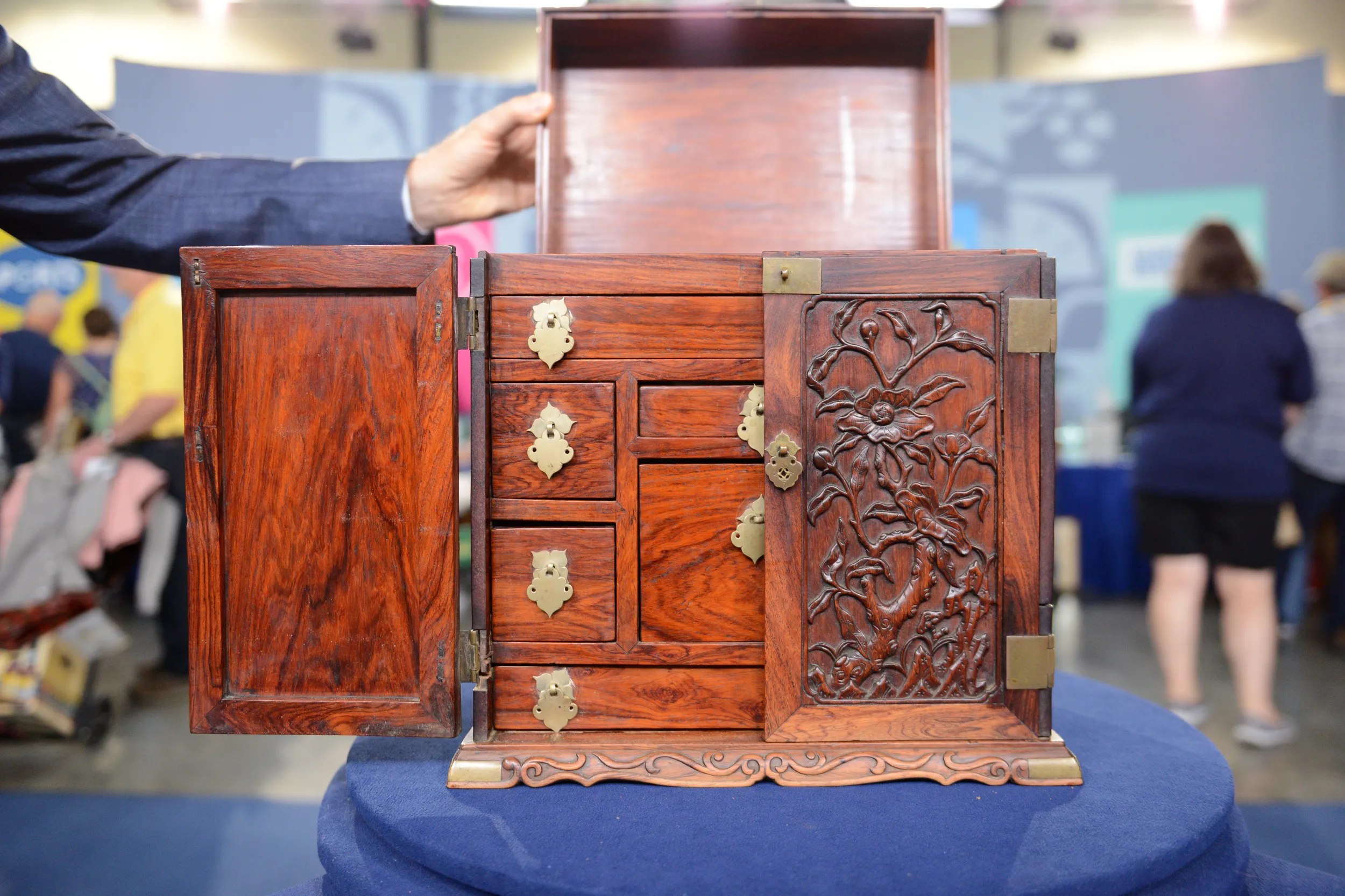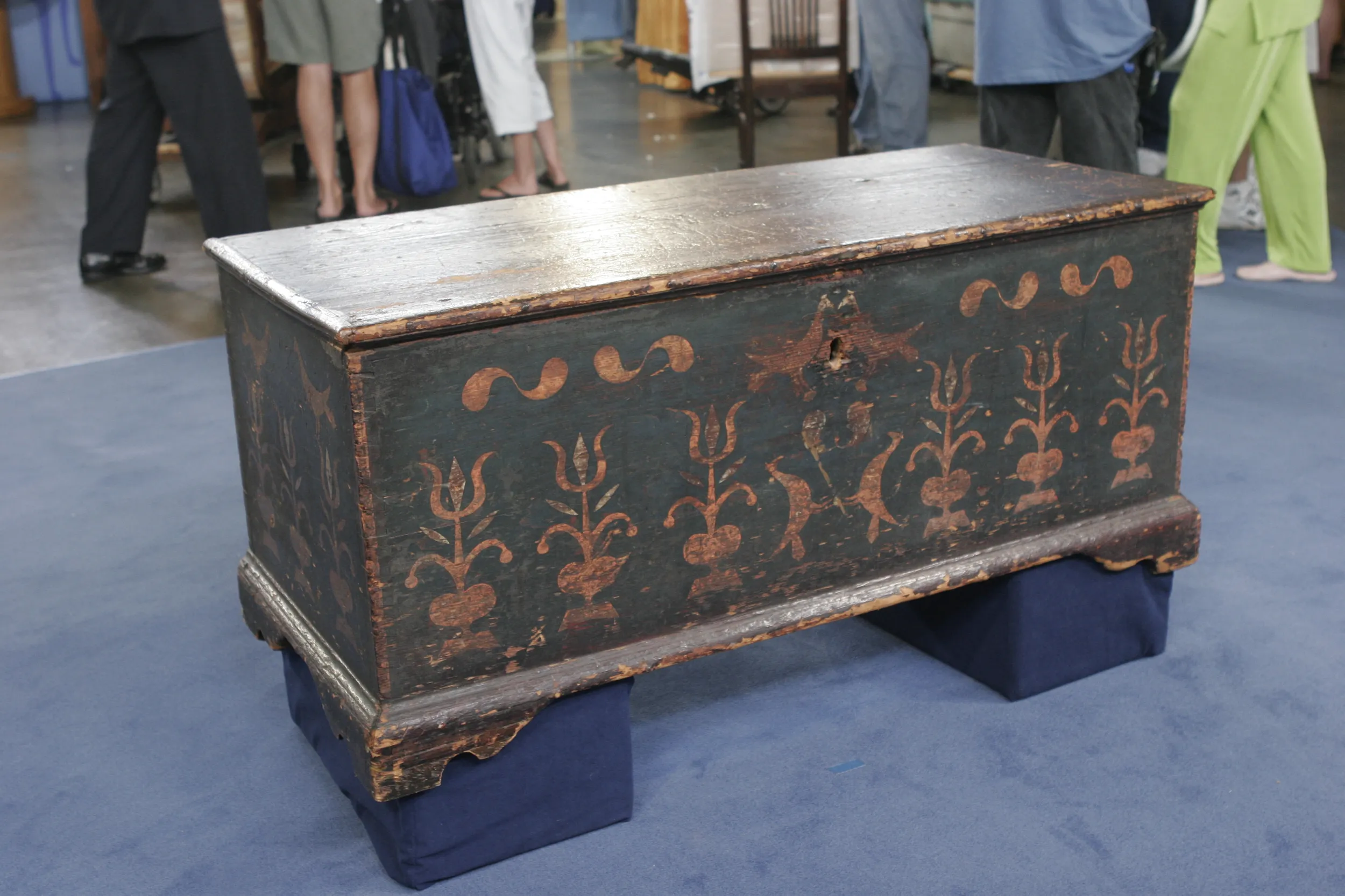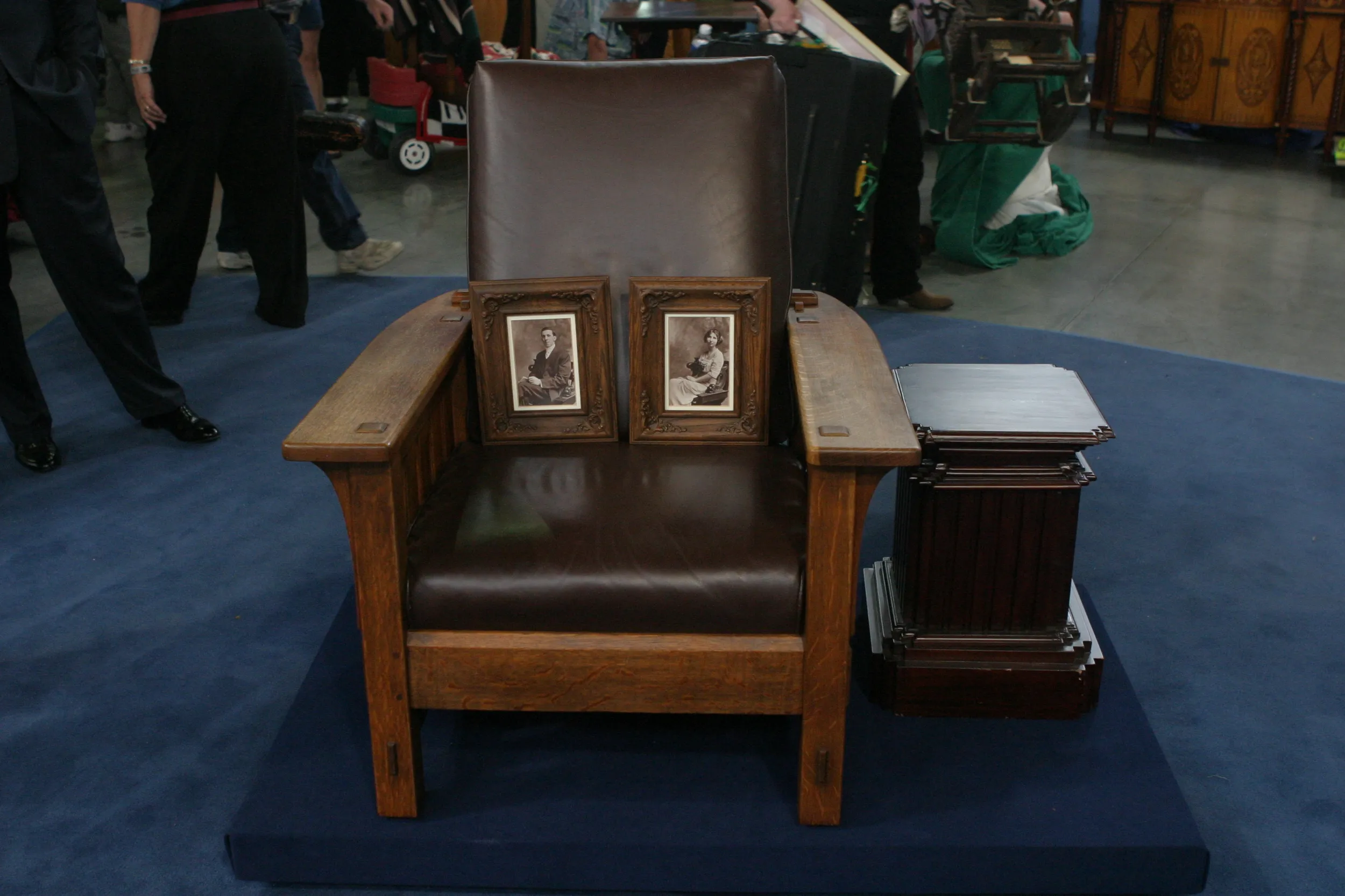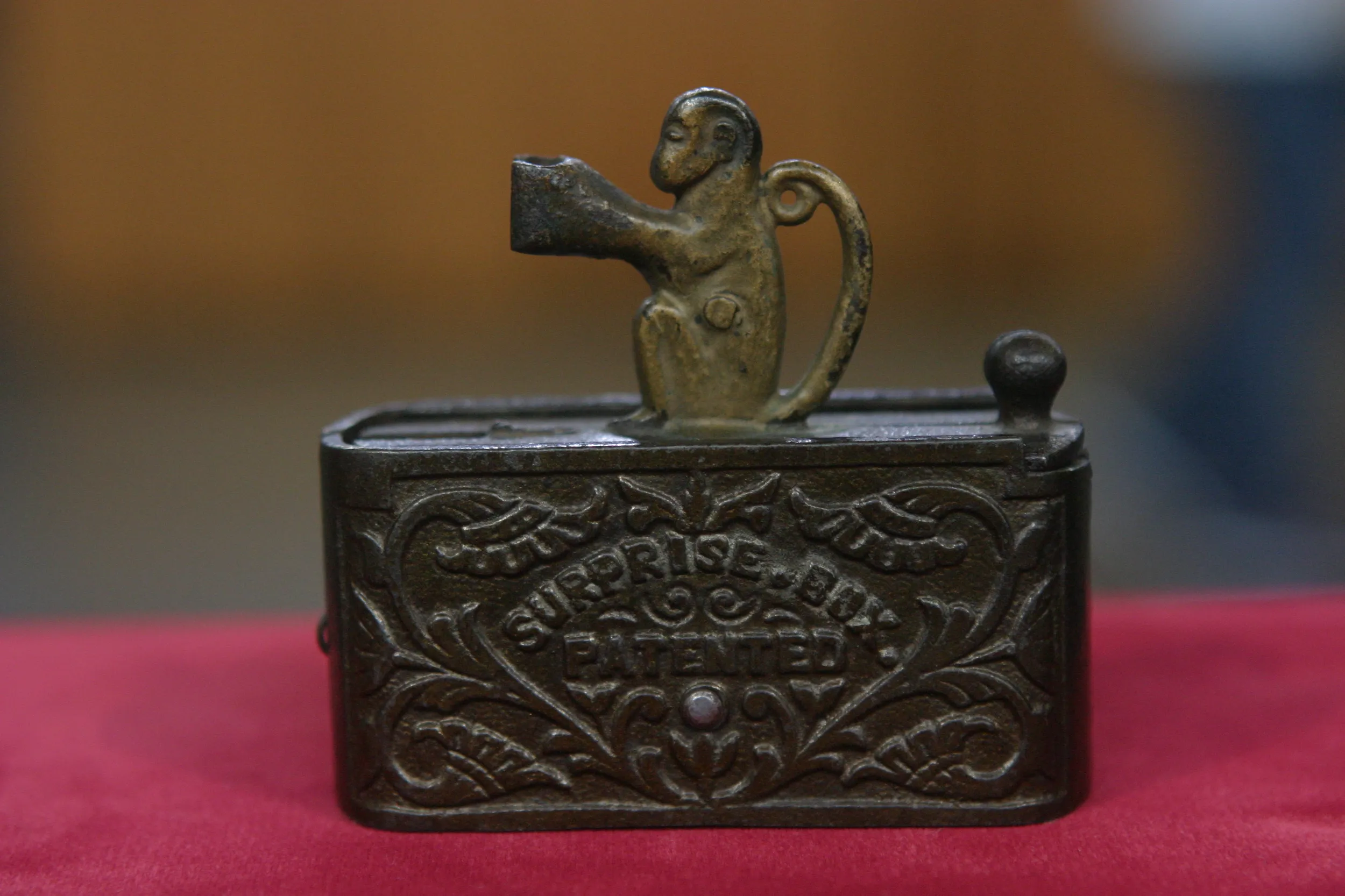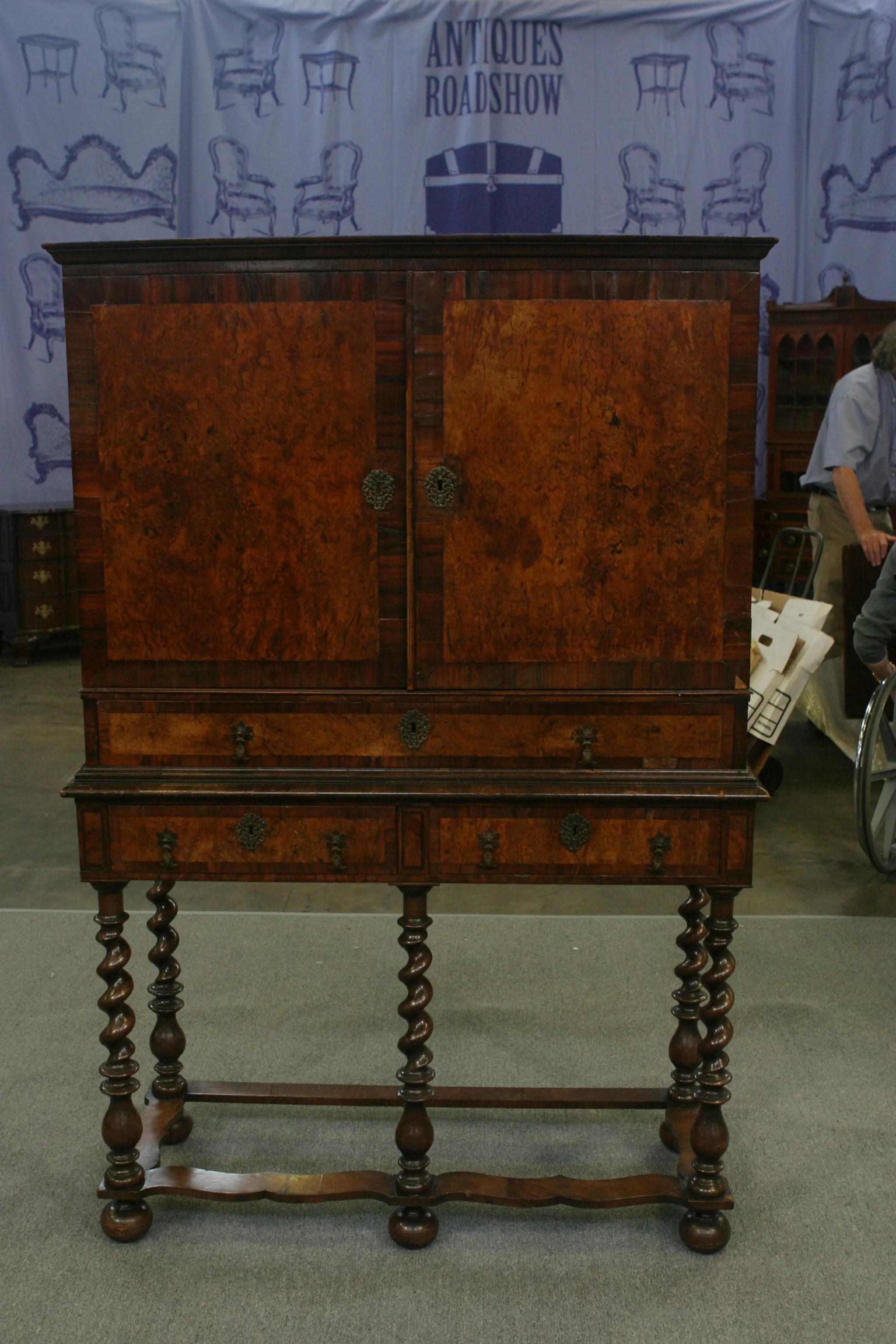GUEST: My father was a linguist in the military and he lived in China in the '60s. He lived on the island Formosa, but he was also on the mainland as well.
APPRAISER: Really?
GUEST: Yes.
APPRAISER: That's extraordinary, because we didn't have much of a relationship with China at that time.
GUEST: Not very much.
APPRAISER: And how did he come across this?
GUEST: Honestly I don't know. I know he brought it back with him. He retired from the military in 1969, so I'm guessing he had it probably in the early '60s is when he lived in Formosa.
APPRAISER: When I look at works of art of any type, the first thing I do is observe the basic shape, the function. And you can see that it's got this deep hinge lid and this shallow compartment. A pair of doors that open up. And a number of small drawers. So one of the things that you look for with cabinetry is to see if there's consistency, because a cabinetmaker is going to choose the best quality wood possible, but rarely do they use that best quality wood on interior surfaces that aren't seen.
GUEST: Oh, interesting.
APPRAISER: They did on this. This is a little more special. We're going to close this back up. And I want you to remember those beautiful pulls on the inside, those interesting pulls that match those here on the front. And as we pull this down, I'm going to lean it forward so everyone can see the carving on the top.
GUEST: Oh.
APPRAISER: Which is a stylized cloud shape here that is incorporating animal forms-- most likely dragons. So it does two things: these are both coil dragons, very stylized, but they're also forming a mask. And this mask is really hard to see, but it's trying to be a face. And you have the eyes here, and that's the crest, little horns here. So it's a very stylized face.
GUEST: Wow.
APPRAISER: And around the edge are more of these stylized dragons. If we look at the front, we see that in fact they're flowering branches coming for this tree.
GUEST: Yes.
APPRAISER: These are lotus. Indicative of long life. And we're going to share a view of the side. Now remember what was at the top, this kind of cartouche. We get a mirror of that around the side. Very attractive pulls. These hinged kind of loose bail handles. Going around the back you can see more of the same wood, and your very clever repair. (chuckles) Paperclips come in handy all the time.
GUEST: Yeah.
APPRAISER: They do… And down here at the base you can see the continuation of the scrolling vine all the way around to the front.
GUEST: Okay.
APPRAISER: And this is what's called a cosmetic chest.
GUEST: Ah.
APPRAISER: So actually what fit in the top was a flat-folding mirror stand that hinged up and had a ratchet support, and the mirror stand would be at an angle.
GUEST: Okay.
APPRAISER: That was lost long ago. The shape, the decoration, and the wood points to an origin in China. And it gives us an idea of the timeframe this was made, which was somewhere around 1700 to 1720 or '30.
GUEST: Wow.
APPRAISER: And the wood is a wood called huanghali, and huanghali is this rare Asian rosewood that's in very short supply. But it was the popular wood used during the Ming dynasty and into the early Qing dynasty.
GUEST: Very interesting.
APPRAISER: Now, in the economy today, what's one of the dominant growing economies? China. The Chinese want to collect their own things.
GUEST: Oh.
APPRAISER: So a few years ago this did not have that much value. At auction today, I would expect this to make $40,000 to $60,000.
GUEST: I don't know what to say. (chuckles) (exhales) Wow. Wow. Hm.
APPRAISER: First one I've seen in 20 years on the Roadshow.
GUEST: Really? Yeah? Super!




